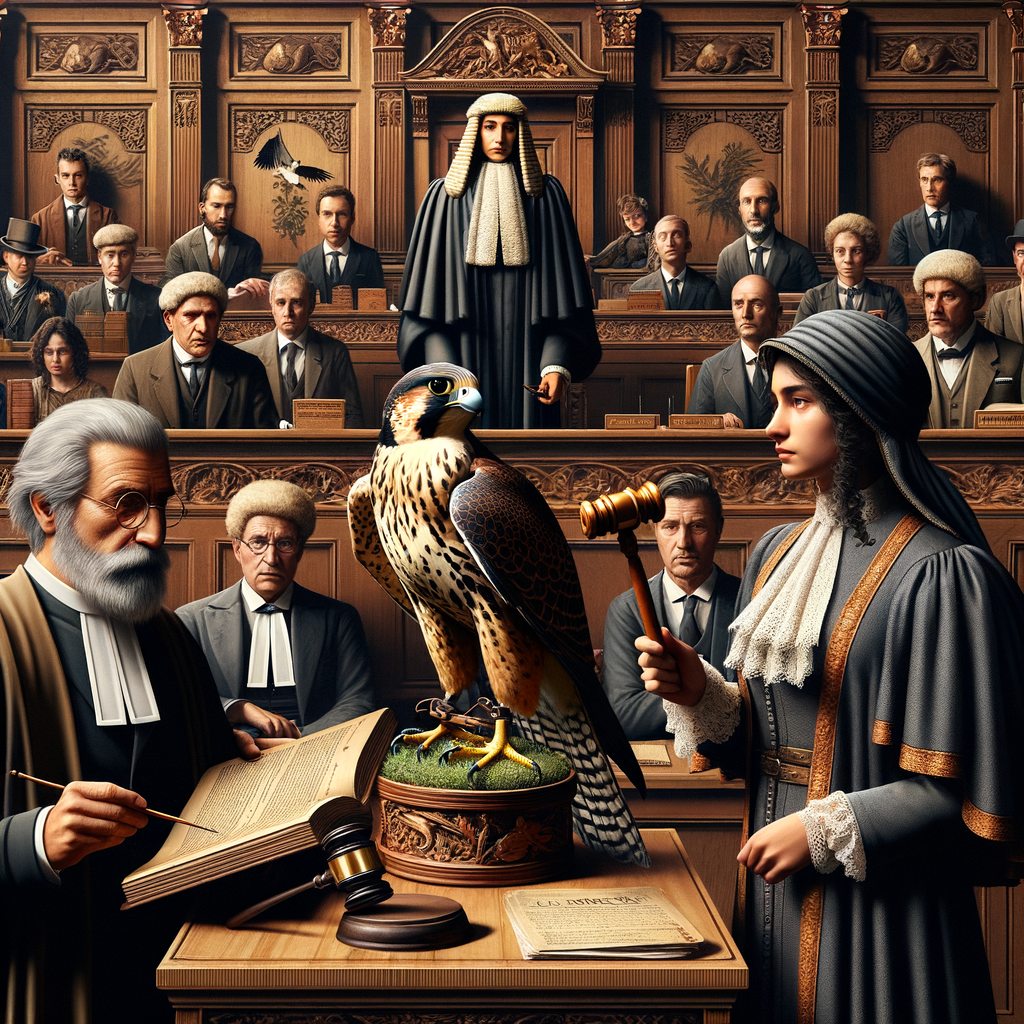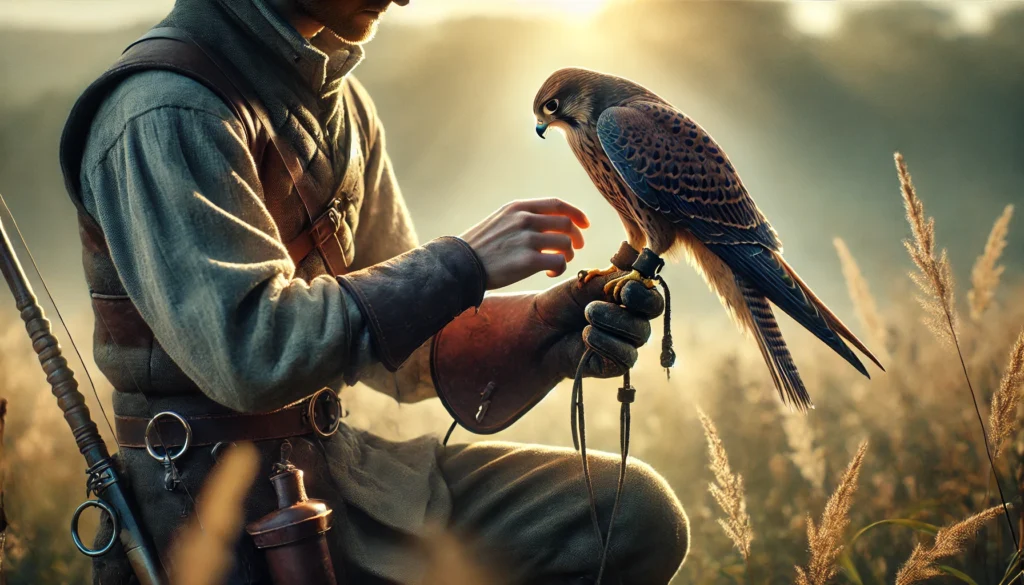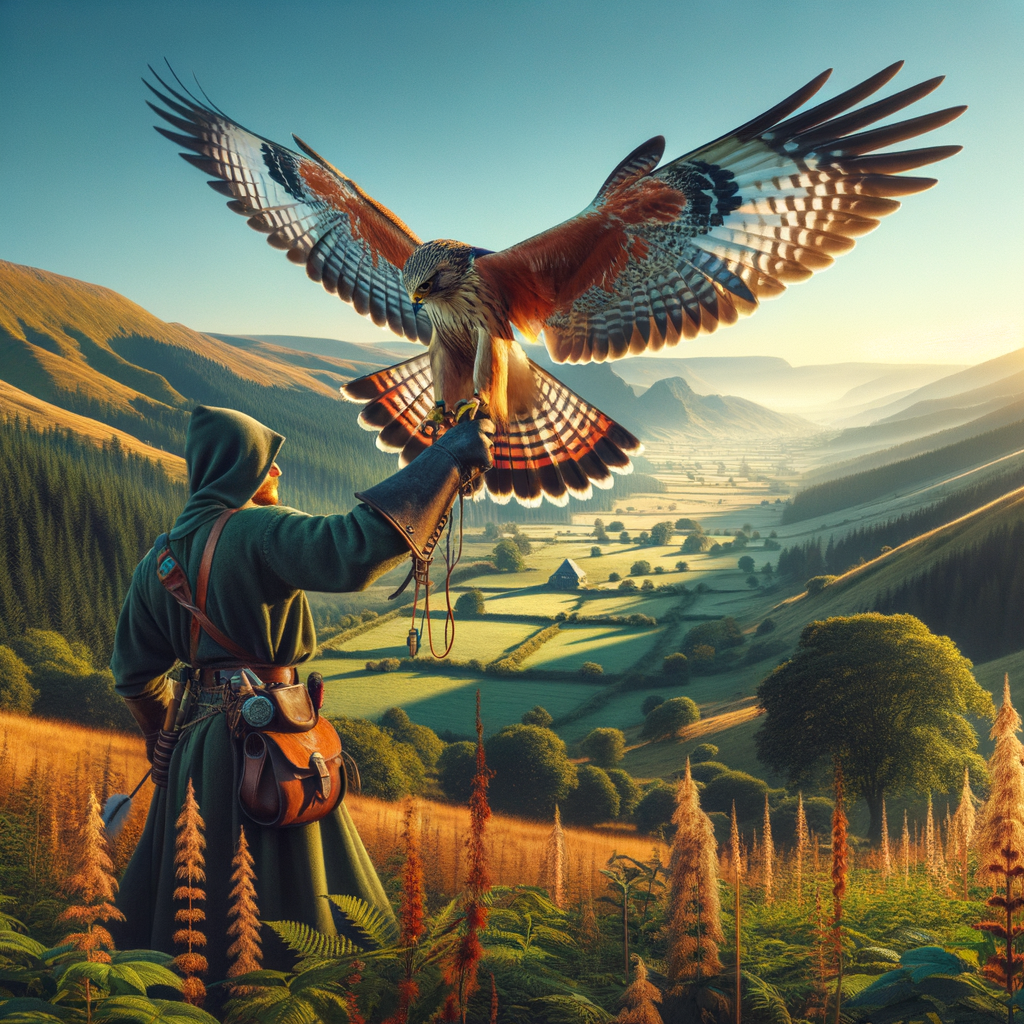Fascinating Facts about Falconry and Its Legal Cases
- Falconry has a long history dating back over 4,000 years.
- It became popular in Europe during the medieval period.
- King Richard II of England enacted laws to protect birds of prey.
- The practice was regulated to ensure sustainability and conservation.
- Legal cases related to falconry often involved the protection of bird species.
- Certain types of falcons were reserved for the noble class.
- Modern laws around falconry focus on ethical treatment and preservation of raptors.
- Falconers require proper permits and must follow strict guidelines.
- The relationship between humans and birds of prey is central to the tradition of falconry.
Unraveling the Tales of Falconry: A Legal History Journey
Hey there, bird lovers and history buffs!
Have you ever wondered about the rich and sometimes twisty legal history behind the majestic art of falconry? Imagine for a moment that falconry is like an ancient Irish lore, where each hawk or falcon takes on a role as vibrant as the characters in a legendary tale. Just as the legendary warrior Cúchulainn, with his loyal hound, straddles the line between myth and history, our feathered friends have soared through centuries of fascinating legal scrimmages that shape the tradition we cherish today.
In this story-filled article, we’ll dive into the historical-legal cases of falconry, shedding light on the rules and rulings that have governed this noble pursuit. We’ll explore curious cases and noteworthy laws, offering a glimpse into how our ancestors viewed these magnificent birds and their unique relationship with humans.
So, why is it important to keep reading? Because through these tales of trials and triumphs, we can better appreciate the deep-rooted heritage of falconry and understand how it continues to evolve within our society. Just like unlocking the secrets of an ancient Irish legend, delving into these historical legal cases will enrich your love and respect for this ancient sport.
Ready to embark on this journey with us? Let’s spread our wings and soar into the captivating world of falconry’s legal past!
Unraveling Historical Legal Cases in Falconry
Falconry is an ancient sport that has been around for thousands of years. It’s not just about training birds to hunt; it also has a rich legal history. This article will dive into the fascinating world of falconry legal history, where we’ll explore notable falconry cases and historical falconry laws that have shaped this noble pursuit.
Falconry Legal History
Falconry legal history dates back to ancient times. Kings and queens often practiced falconry and made laws to protect their favorite pastime. These laws covered everything from who could own a falcon to what types of birds could be used. An exciting piece of history is the ancient Japanese law that only allowed samurai and nobility to practice falconry, demonstrating its status symbol (Royalty and Falconry).
In medieval Europe, falconry became more regulated to ensure the sport thrived while maintaining bird populations (Falconry in Medieval Europe). Laws were created to manage the capture, training, and breeding of raptors, emphasizing conservation and respect for wildlife.
Notable Falconry Cases
Over the centuries, many notable falconry cases have shaped its legal landscape. One such case is from medieval England, where a court ruling emphasized that only the wealthy could own falcons, while the poorer classes were restricted to lesser birds like kestrels (Famous Historical Falconers).
Another prominent case occurred in ancient Persia, where records show that anyone caught harming a trained falcon faced severe penalties (Falconry in Persian Culture). These strict laws highlight the importance and reverence of falconry in Persian society and the lengths taken to protect these birds.
Historical Falconry Laws
Historical falconry laws have been complex and varied across cultures and times. In ancient China, laws stipulated precise protocols for trapping, training, and maintaining falcons (Falconry in Chinese Culture). These practices ensured the sustainability and ethical treatment of birds, reflecting the sophisticated understanding of falconry ethics even in ancient periods.
In the Middle Ages, laws in Europe evolved to address conservation needs due to heavy falconry practice impacting bird populations. Many regions implemented restrictions on hunting seasons and designated breeding periods to foster population recovery (Historical Falconry Manuals).
Conclusion
The history of falconry is as rich and complex as the sport itself. Legal history in falconry has been marked by notable cases and precise laws spanning centuries and cultures. These elements not only reflect the sport’s cultural significance but also underscore the ongoing efforts to ensure the ethical treatment and conservation of birds. To dive even deeper into the fascinating world of falconry’s past, head over to Learn Falconry.
Underpinning all these laws and cases is a deep respect and admiration for these magnificent birds. To learn more about specific falconry practices or to explore various types of falconry equipment, visit our Falconry Techniques and Falconry Equipment sections. Curious about the different species of falcons used in this sport? Check out our detailed coverage here.
Falconry Legal History and Regulations in 2024
Falconry is an ancient art that involves training birds of prey to hunt. As fascinating as this practice is, it also comes with a complex set of laws and regulations. Here are some important aspects of falconry legal cases and regulations in 2024.
Falconry Regulations in the United States
North American Falconers Association
- Represents falconry in the United States.
- Works with the U.S. Fish and Wildlife Service to regulate the limited take of nestling peregrine falcons in the western U.S. since 2001.
- Recently approved the limited take of “passage” peregrines in the eastern U.S.
U.S. Fish and Wildlife Service Regulations
- Falconry permits require a written exam and apprenticeship.
- Permits are issued by individual states.
| Regulation | Description |
|---|---|
| Permit Requirement | Written exam and apprenticeship necessary |
| State Authority | States issue falconry permits |
Falconry in Georgia
Department of Natural Resources
- Issues falconry permits in Georgia.
- Requires a written exam and apprenticeship.
- Specific process for applying for Peregrine Falcon permits through an online drawing system called Go Outdoors.
Falconry in Michigan
Wildlife Conservation Order
- Regulates falconry with comprehensive practices.
- Covers live take of raptors from the wild, bird care, and training.
- Michigan has 139 licensed falconers.
- Recommendations include adding merlins to the general raptor capture permit list and removing American goshawks from the limited capture permit list.
Notable Legal Cases in Falconry
Peter Stavrianoudakis et al. v. United States Department of Fish and Wildlife
- November 2022: Government agreed to stop enforcing speech regulations.
- Allows falconers to provide paid demonstrations and use their birds for movies and commercials.
- Ongoing appeal of the Fourth Amendment claims at the Ninth Circuit.
Holly Lamar v. Tennessee Wildlife Resources Agency
- A suit filed by a master falconer against TWRA officers.
- Officers allegedly violated her constitutional rights during a home search and seizure of 13 raptors.
- Lawsuit includes claims of malicious prosecution and ruining her lawful business.
Wildlife Crime Investigation
- New DNA forensic methods used to test the authenticity of documented breeding records for Peregrine Falcons.
- Highlighted illegal trade of wild Peregrine Falcons in the UK.
Reporting and Renewal of Falconry Permits
General Procedures
- Falconers must submit annual reports by December 31.
- Reports include band numbers, species, sex, age, and acquisition dates of raptors.
- Licenses expire every five years and must be renewed before expiration.
| Reporting Requirement | Description |
|---|---|
| Annual Report | Due by December 31, includes detailed raptor information |
| License Expiry | Every five years, renewal forms sent by mail |
Conservation and Falconry
Conservation Efforts
- Introduction of exotic raptors into the wild can create hybrids, impacting native gene pools.
- Falconry can aid in species conservation, such as the artificial Saker nests project in Mongolia.
| Conservation Project | Impact |
|---|---|
| Exotic Raptors | May create hybrids, affecting native species’ gene pool |
| Saker Nests in Mongolia | Promotes species conservation |
This comprehensive overview highlights key aspects of falconry regulations and notable legal cases in 2024. The regulatory landscape is shaped by state and federal laws to ensure the responsible practice and conservation of birds of prey.
Key Takeaways from Historical Legal Cases in Falconry
Exploring the legal landscape surrounding falconry offers us a glimpse into the evolving regulations and notable cases that shape this time-honored practice. In 2024, falconry laws across various regions, such as the United States, Georgia, and Michigan, showcase a complex web of regulations aimed at preserving both the art of falconry and the welfare of the raptors involved.
Significant regulations include the need for special permits, written exams, and apprenticeships for aspiring falconers. Falconry also faces legal challenges and litigation, as seen in cases like Peter Stavrianoudakis’s battle for free speech concerning falconry demonstrations and Holly Lamar’s lawsuit against wildlife officers in Tennessee.
Moreover, the role of falconry in species conservation came to light with projects like artificial Saker nests in Mongolia and the conservation success story of Peregrine Falcons nesting in Brussels.
Ultimately, these regulations, legal battles, and conservation efforts underline the importance of navigating the balance between maintaining traditional practices and ensuring ethical treatment and conservation of the raptors. By understanding these laws and their implications, we can better appreciate and support the responsible practices of falconry today.



